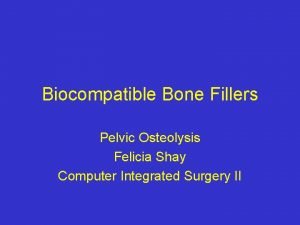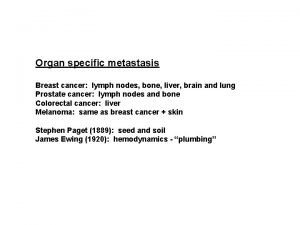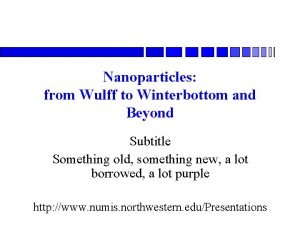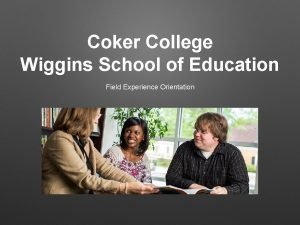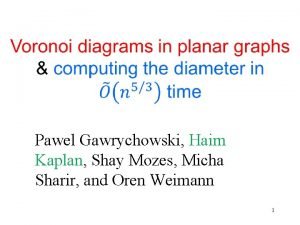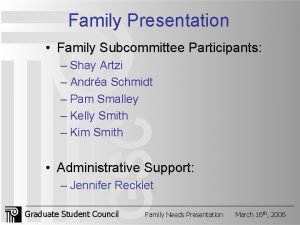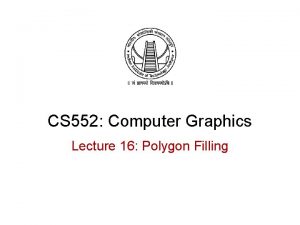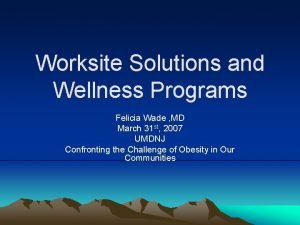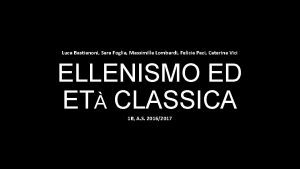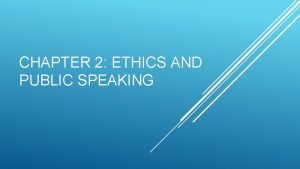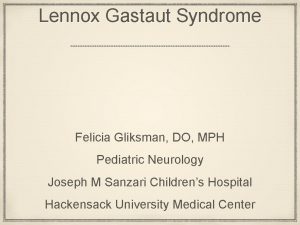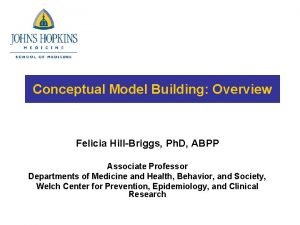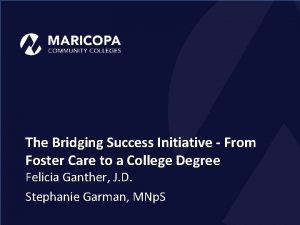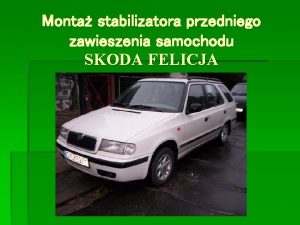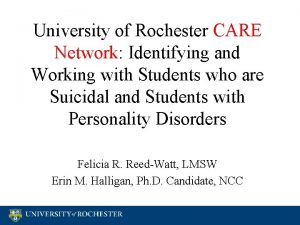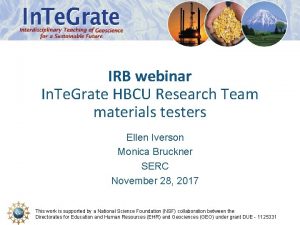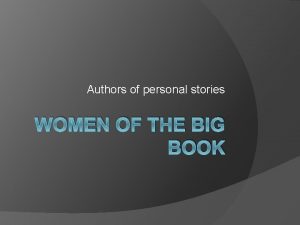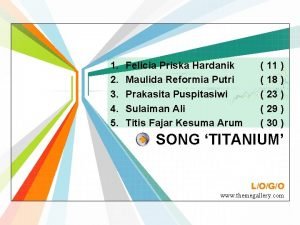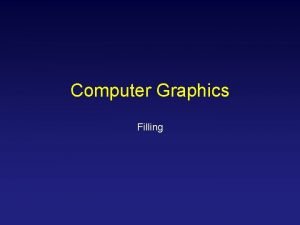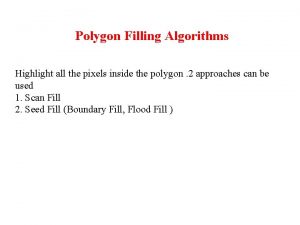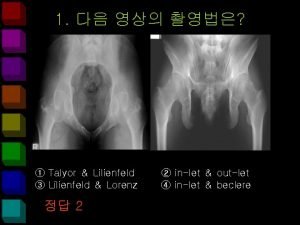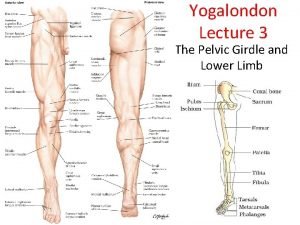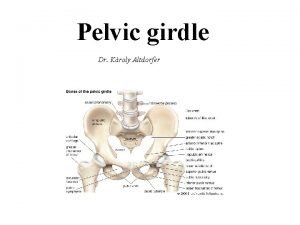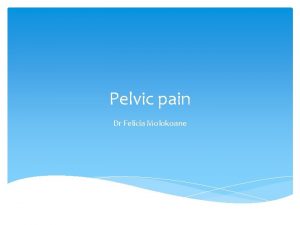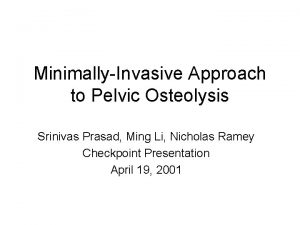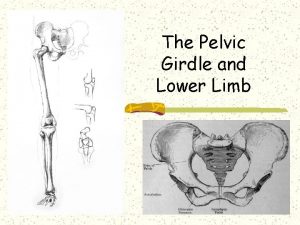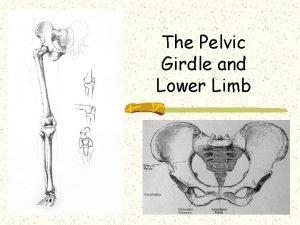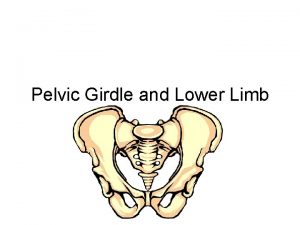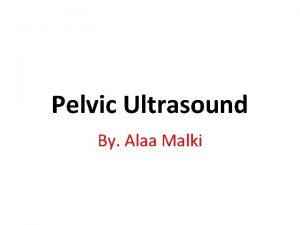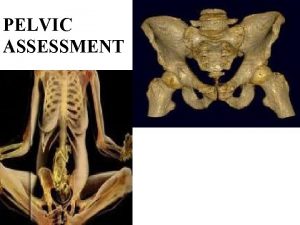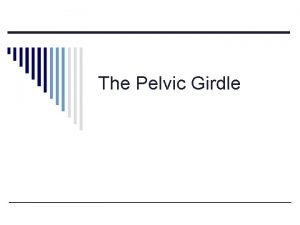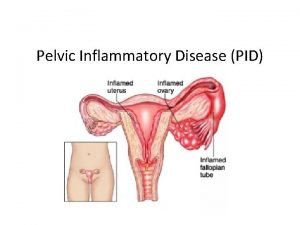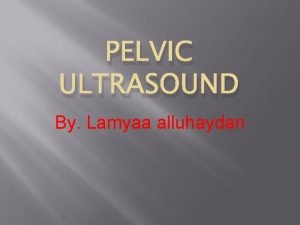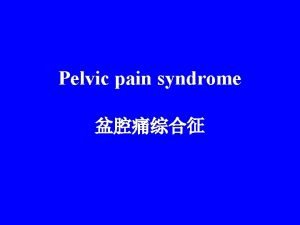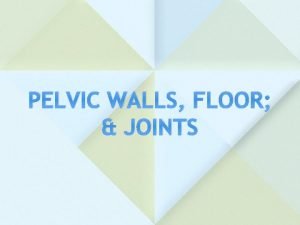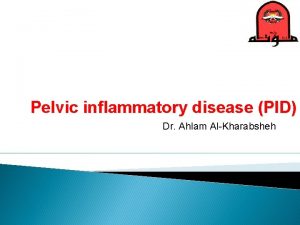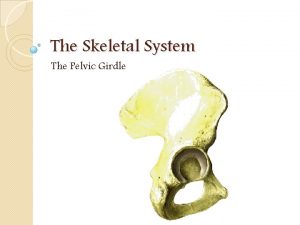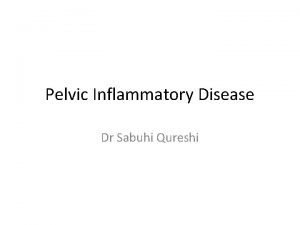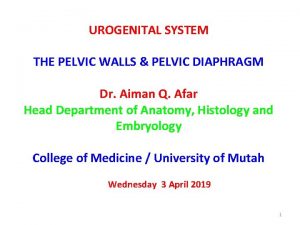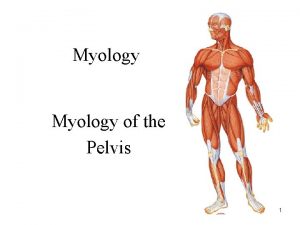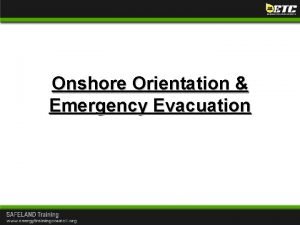Pelvic Osteolysis Evacuation and Filling Felicia Shay Computer
































- Slides: 32

Pelvic Osteolysis: Evacuation and Filling Felicia Shay Computer Integrated Surgery II Checkpoint Presentation

Plan of Action • • Project Description Project Management Considerations Data Contacts Conclusions Lessons Learned

What is the Problem? • How does the problem arise? – Location – Necrosed bone • Current Situation/Technology • Importance of Project • Project/Goal Project Description

Project Description • • • ID material/potential Plan for tool design Explore Options Evaluate Build tools Testing Project Description

Deliverables Minimal: • Research and documentation of potential material – Tools – Filling • Potential tool design with evaluations and considerations • Bone filler material and analysis of potential material Expected: • Prototyping of instrument and filling • Modeling and evaluation of each • Potential integration and mechanism for whisking, evacuation and filling Maximal: • Integration with robot Project Description

Initial Constraints • Physiologically • Problem • In the material: – Biocompatibility – Flexibility to access the material • In the shape of lesion • In the design and tools needed: – Need for suction and irrigation – Feasibility Project Description

Implications • Minimally invasive • Pre-Operative – More planning time – More cost • Post-Operative – Faster healing time – Less likely for infection – Cost distribution to hospital and insurance • Most Importantly: Corrects a currently inoperative condition Project Description

Plan of Action • • Project Description Project Management Considerations Data Contacts Conclusions Lessons Learned

Initial Proposed Dates • 2. 22. 01 Official Start Date • 3. 1. 01 Meetings scheduled/attended and research on potential evacuation and filler material • 3. 8. 01 Research weight bearing material • 3. 15. 01 Read papers, begin brainstorming on designs, purchase material and background reading. • 3. 22. 01 Model different designs and evaluate according to the constraints theoretically • 4. 7. 01 Begin prototyping and testing of different size tubing and wires with tool constraint, filling • 4. 14. 01 Evaluating different prototypes • 5. 1. 01 Completion of project and documentation Project Management

Progress by Checkpoint • 2. 22. 01 Official Start Date • 3. 1. 01 Meetings scheduled/attended and research on potential evacuation and filler material • 3. 8. 01 Research weight bearing material • 3. 15. 01 Read papers, begin brainstorming on designs, purchase material and background reading. • 3. 22. 01 Model different designs and evaluate according to the constraints theoretically • Checkpoint Project Management

Current Status • 4. 30. 01 Meeting with Dr. Horowitz. • 5. 1. 01 Met with Mark Kuntz, set up lab meeting • 5. 7. 01 Wire material arrives Tubing from Wilmer Oncology (Thanks Aaron) • 5. 8. 01 Mark Kuntz, Undergraduate Design Lab furnace, plate (machine shop), potential testing • 5. 9. 01 Tubing arrives Mechanical setting/testing of wires • 5. 10. 01 Preparation for final presentation Mechanical setting/testing/loading of wires Project Management

Relevant Papers • • Yang, F. , Wu, K. H. , Pu, Z. J. “The Effect of Strain Rate and Sample Size Effects on the Superelastic Behavior of Superelastic Alloys” Proceedings of the Second International Conference on Shape Memory and Superelastic Technologies. (CA) 1997, p 23 -28. Berg, B. “Twist and Stretch: Combined Loading of Pseudoelastic Ni. Ti Tubing” Proceedings of the Second International Conference on Shape Memory and Superelastic Technologies. (CA) 1997, 443 -448. Ueki, T. , Mogi, H. , Horikawa, H. “Torsion Property of Ni-Ti Superelastic Alloy Thin Tubes” Proceedings of the Second International Conference on Shape Memory and Superelastic Technologies. (CA) 1997, 467 -472. Yang, Jianhua. “Fatigue Characterization of Superelastic Nitinol”. Proceedings of the Second International Conference on Shape Memory and Superelastic Technologies. (CA) 1997, 479 -484.

Plan of Action • • Project Description Project Management Considerations Data Contacts Conclusions Lessons Learned

Considerations • Torque • Repeat cycling (Compression/Tension) – Strain Rate – Fatigue • • Angulation to gain access to site Room for tools and evacuation Tight fit vs Loose fit Range of Motion Considerations

Additional Considerations after Testing • Force Generated – Rotational Mechanism • Crank • Attachment to drill bit head • How can you keep track of the site • General Testing Methods • Importance of Irrigation/Suction due to Force Generation Considerations

Setting and Shaping Superelastic SMA • Shape – 2 Aluminum plates – 30, 45, 90 degree threads drilled as guides – 2 bolts • Furnace – 500 C for 15 minutes – Slow cooling time

Effects of Rotational Movement • Types – Crank – Attachment to drill bit head • ~500 rotations/minute – How can you keep track of the site Effects of Cyclic Wear Force Generation

Cyclic Strain vs Fracture Considerations

Mechanical Testing • Methods – Tensile Strength – Force for Compression • Parameters – Copper tube • Straight • 45 degree – Different bends/lengths

Current Choices of Angulation in Testing and Considerations • Angles of wire end effector/tubing • Length of wire/tubing from bend to tip KEY: Accessing all of the site with angles/length • Force Generated • Cyclic loading/compression/friction with different end effectors and tubing Considerations

Plan of Action • • Project Description Project Management Considerations Data Contacts Conclusions Lessons Learned

Parameters • Wire Degree Bends: – 80 degree bend – 40 degree bend – 30 degree bend • Wire Thickness – 0. 0020” and 0. 0010” • Tube Thickness 45 degree bend – 0. 0028” and 0. 0017”

Data (10 trials + highest and lowest trial) Angle thickness Length Insert (lbf) Withdraw 0. 0020” (lbf) 80 Short -0. 415 +0. 42 40 Short -0. 38 +0. 41 30 Short -0. 050 +0. 055 80 Long -0. 385 +0. 42 40 Long -0. 062 +0. 075 30 Long -0. 019 +0. 025

Design Changes • Considerations: – Force Generation – Rotational Movement – Deformity • Cyclic wear • Tightness down tube • Guidewire with Rubber Tubing Considerations

New Contacts Made • Emanuel Horowitz, Ph. D. Johns Hopkins Material Science and Engineering • James B. Spicer, Ph. D. Johns Hopkins Material Science and Engineering • Mark Kuntz Johns Hopkins Material Science and Engineering Undergraduate Design Lab and Machine Shop • Shape Memory Applications, Inc. www. sma-inc. com Contact: Holly

Dependencies Before • Receipt of the materials to begin prototyping

Dependencies Now • TIME • Limited testing facilities • Certain force testing variability

5. 26. 01 Potential/Projected Deliverables • Completion of Testing • Integration of Tubing • Finding most suitable Rotational Movement • Integration of Suction/Irrigation • Final Testing

Conclusion • Feasibility • Effective • Just takes more: – Time – Work – Planning – Designs – Testing Designs all need to be tested.

Significance • TO: – Patient – Surgeons – Insurance Companies – Technology Development • Less post op recovery time • Treats an existing untreatable condition • Introduction of new technology • Continued interaction b/n surgeons and engineers to solve existing surgical problems where technology is hindering development

Retrospective • Don’t be completely dependent on material • Can’t plan ahead enough • Try to find additional suppliers • Although some things are unforeseeable, you can work around it

Special Thanks to: Niccole Herbert Mark Kuntz
 Dr felicia shay
Dr felicia shay Osteolysis
Osteolysis Osteolysis
Osteolysis Shay pierce
Shay pierce Pawel gawrychowski
Pawel gawrychowski Shay artzi
Shay artzi Giovanna shay
Giovanna shay 8 connected boundary fill algorithm
8 connected boundary fill algorithm Felicia peluso
Felicia peluso Felicia wade
Felicia wade Massimilla lombardi
Massimilla lombardi Felicia utorodewo
Felicia utorodewo Ethical speechmaking
Ethical speechmaking Dr jeffrey gliksman
Dr jeffrey gliksman Felicia hill-briggs
Felicia hill-briggs Maria felicia de jesús sacramentado maría teresa arminda
Maria felicia de jesús sacramentado maría teresa arminda Dr. felicia l. ganther
Dr. felicia l. ganther Felicia vasudevan
Felicia vasudevan Felicia ganther
Felicia ganther Felicia stabilizátor
Felicia stabilizátor Jenis-jenis wacana
Jenis-jenis wacana Felicia khansa jaidah seno
Felicia khansa jaidah seno Felicia reed watt
Felicia reed watt Famu irb
Famu irb Felicia bellows
Felicia bellows Dr silkworth
Dr silkworth What does ricochet mean in the song titanium
What does ricochet mean in the song titanium Region filling
Region filling Polygon filling in computer graphics
Polygon filling in computer graphics Polygon fill algorithm
Polygon fill algorithm Inlet outlet pelvis
Inlet outlet pelvis Ischial crest
Ischial crest Pelvis minor major
Pelvis minor major
